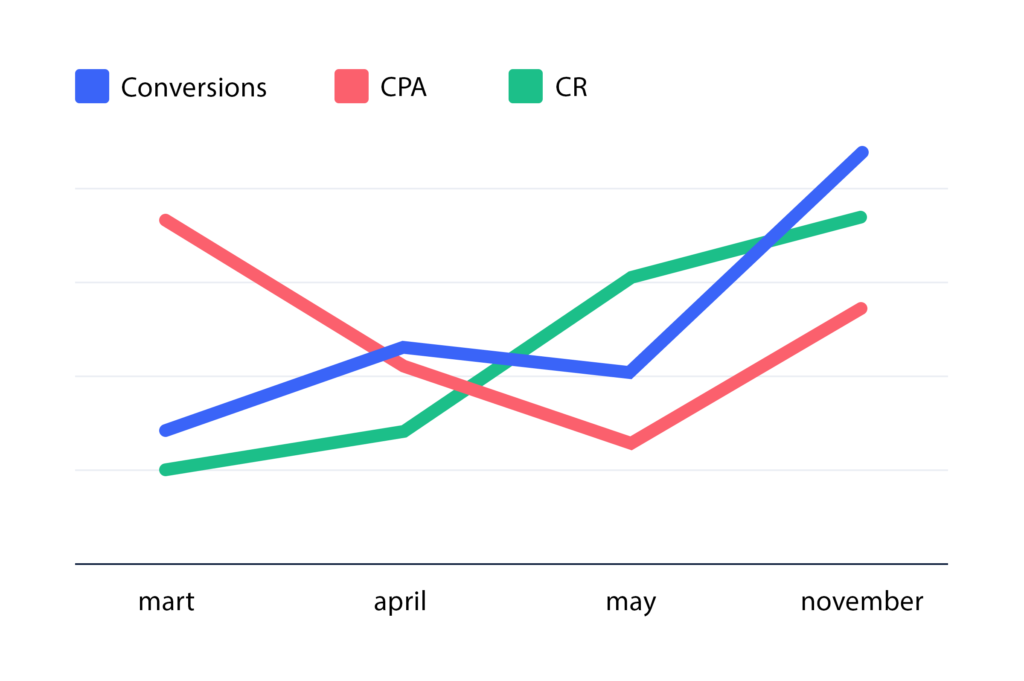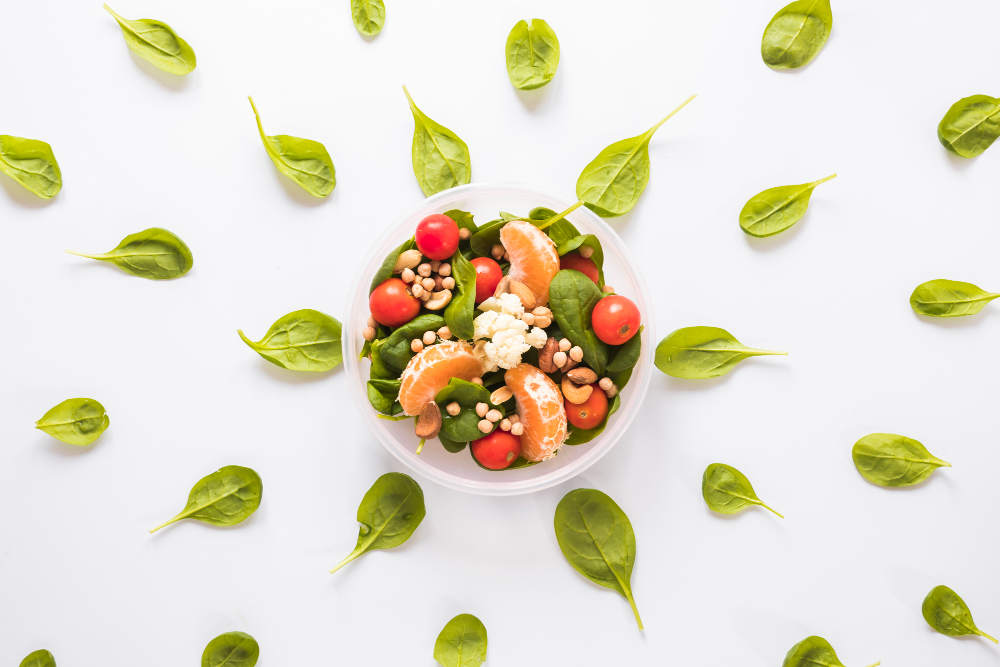Anastasia Eliseeva, Senior Contextual Advertising Specialist at Digital People Group DPL, shares how her team sets up and manages contextual advertising for the online store ProBulion.ru, which sells bone broths. In this case study, we will look at the first 8 months of work, during which the number of conversions from contextual advertising was increased fourfold.
The online store ProBulion.ru, which specializes in bone broths, approached our agency. The company produces meat and fish bone broths using its own technology and delivers them to Moscow, the Moscow region, St. Petersburg, Nizhny Novgorod, and Kazan. This is a family business that won the Live Organic Awards 2021 and WeGreen 2022.
The client initially ran advertising campaigns on their own but soon decided to turn to the agency.
Reasons for this decision:
- They were dissatisfied with the number of sales — our task was to increase them by attracting a new audience and activating the current one through contextual advertising.
- The cost per order was high — we were required to lower it.
Audit of Previous Campaigns
We transferred several old campaigns to our account, enabled auto-tagging, and fixed critical errors discovered during the audit. These were the errors:
- Incorrect logic in keyword segmentation across campaigns. Targeted, branded, and near-target queries were mixed within the same campaign, and there was no segmentation into groups. As a result, the ads were irrelevant to the keywords.
- Mixed campaigns set up to show ads both on Search and in the Display Network at the same time.
- Enabled extended geographic targeting.
- Incorrect tagging in ads. For example, the link had ?utm_source=direct — it was unclear where the conversion had come from. This greatly complicates further optimization.
- Duplicate keywords in campaigns.
Preparation of New Campaigns
Preparation of New Campaigns
We gathered the current semantics and divided it into three categories:
- Branded queries, which include the brand name in all variations.
- Product-related queries, such as “buy broth,” “chicken broth,” etc.
- Broad queries, aimed at expanding audience groups that are somehow interested in our product (office workers, athletes, cooking enthusiasts, expectant mothers).
One of the priority tasks was to launch a branded campaign on Search. We believed it had great potential for lead generation, and we were right. To this day, this campaign brings us the most cost-effective conversions.
We also launched retargeting for three user segments:
- Those who visited the website but did not place an order or add products to the cart.
- Those who added products to the cart but did not complete the purchase.
- Those who had previously made purchases.
For each ad group, we carefully crafted the texts, focusing on the naturalness of bone broths, their health benefits, and convenience in use.
In just the first two months, we not only achieved the set KPIs but also reduced the cost per lead by more than three times compared to the start. As a result, we delivered a performance that exceeded the planned targets by 26%:
Campaign Optimization
The results from the first two months were pleasing to the client, who decided to increase the advertising budget and allocate part of it for testing new tools.
What we did over the next six months:
- Adjusted bids by gender, age, device, and purchasing power.
- Cleaned up the traffic: excluded inefficient platforms and expanded the list of negative keywords.
- Tested various strategies.
The most effective strategy for us turned out to be the automatic bidding strategy with payment for conversions, which we still use today. In both the branded and product campaigns, it quickly learned and brought us conversions at a fixed cost. In some campaigns, we use this strategy to maintain reach and optimize expenses.
Overall, the approach where the client pays only for real orders seems logical and mutually beneficial. This is usually the result of systematic and consistent work — in our case, for example, we launch interest-based and CRM audience targeting. It’s reasonable to assume that there is a correlation between reach and conversions.
With the expansion of the product line, we updated the semantics for the product campaign.
We launched and tested various types of advertising campaigns: Look-alike campaigns based on CRM data (uploaded CRM data to Yandex Audiences), display network campaigns based on interests, standard search ads, and keyword-based display network campaigns.
The most effective turned out to be the Campaign Master — it still brings about 50% of the conversions. It’s an automated campaign, so we only update the ad titles, descriptions, and images. Additionally, since Campaign Master includes auto-targeting, we find the interested audience and gather additional leads. We also added interest-based targeting based on statistics from Yandex Metrica, which Campaign Master helps to accumulate.
We disabled everything that was ineffective: search queries, ads, ad groups, and campaigns.
For example, the reach campaigns (Search and Display Network) turned out to be expensive and did not yield the expected number of conversions, so we turned them off and focused on our main target audience with already formed demand.
Campaigns in the Display Network (branded and product) didn’t perform well — we attribute this to the fact that the client is selling products with immediate demand, which are targeted at a hot audience, so we also disabled them.
What Results We Achieved
Two search campaigns — the branded and product campaigns — were key to our conversions. We strengthened them with the Campaign Master, which helped attract additional targeted audience through auto-targeting.
By the way
Some clients mistakenly believe that search campaigns and Campaign Master conflict with each other — this is not the case. Campaign Master helps gather additional audience segments that cannot be reached using only Search. In the case of our client, Campaign Master and the search campaigns complement each other, and each delivers the best results when both are running.
Regarding ad texts and search queries, the best-performing ones focus on the product’s naturalness, health benefits, and ease of use. For example: “ProBulion Bone Broth — 100% natural!” or “A source of collagen, calcium, and amino acids. A great snack and the base for your favorite dishes.” Brand-related queries also perform well: “about broth,” “pro bullion,” “probulion buy,” “probulion ru bone broth,” etc. These account for 60-65% of all conversions, and they are the least expensive — ranging from 100-300 rubles.
**Commercial product queries** like “buy broth,” “bone broth buy,” “order broth,” “broth price,” etc., show slightly weaker results. We also included broader queries in the product campaign, such as “turkey broth” (from the website’s assortment), “dietary/organic/collagen bone broth” (product properties), but these were less effective. Together, they accounted for another 25-30% of conversions, but at a higher cost.
The remaining 10% of conversions came from reach campaigns (we didn’t expect much here, but were trying to identify interested audiences) and retargeting (which didn’t perform as effectively as expected). Example keywords: “ready meals for office Moscow,” “order ready meals,” “keto diet food,” “gluten-free products,” “sports nutrition post-workout,” “protein for weight loss,” “diet for breastfeeding mothers,” “what can a breastfeeding mom eat.” We soon disabled the reach campaigns due to high CPA.
We regularly monitored statistics and tracked improvements. Every two weeks, we discussed the results with the client and developed new hypotheses. Over the course of the campaign, we managed to increase conversions by 4 times, and we almost doubled the CR KPI.
The cost per conversion fluctuated because initially, when only the branded and product campaigns were running (the most conversion-driven), the cost per lead was minimal. However, as display networks, reach campaigns, and tests were introduced, the average price increased. Additionally, the cost per click rose, and new competitors emerged.
We continue to optimize campaigns, working on reducing CPA, and we are testing new cold audience segments to increase sales.

